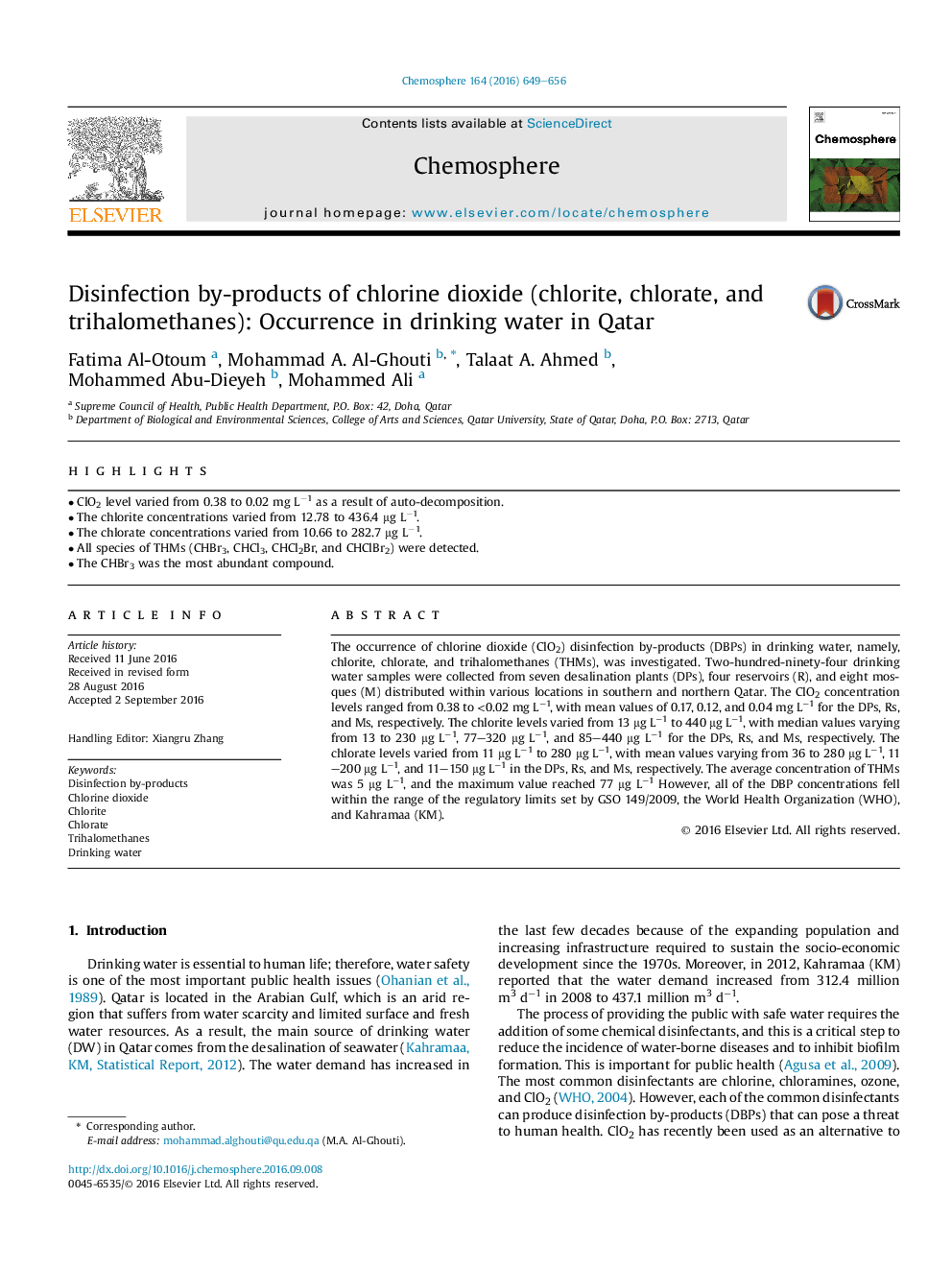| Article ID | Journal | Published Year | Pages | File Type |
|---|---|---|---|---|
| 6306057 | Chemosphere | 2016 | 8 Pages |
Abstract
The occurrence of chlorine dioxide (ClO2) disinfection by-products (DBPs) in drinking water, namely, chlorite, chlorate, and trihalomethanes (THMs), was investigated. Two-hundred-ninety-four drinking water samples were collected from seven desalination plants (DPs), four reservoirs (R), and eight mosques (M) distributed within various locations in southern and northern Qatar. The ClO2 concentration levels ranged from 0.38 to <0.02 mg Lâ1, with mean values of 0.17, 0.12, and 0.04 mg Lâ1 for the DPs, Rs, and Ms, respectively. The chlorite levels varied from 13 μg Lâ1 to 440 μg Lâ1, with median values varying from 13 to 230 μg Lâ1, 77-320 μg Lâ1, and 85-440 μg Lâ1 for the DPs, Rs, and Ms, respectively. The chlorate levels varied from 11 μg Lâ1 to 280 μg Lâ1, with mean values varying from 36 to 280 μg Lâ1, 11-200 μg Lâ1, and 11-150 μg Lâ1 in the DPs, Rs, and Ms, respectively. The average concentration of THMs was 5 μg Lâ1, and the maximum value reached 77 μg Lâ1 However, all of the DBP concentrations fell within the range of the regulatory limits set by GSO 149/2009, the World Health Organization (WHO), and Kahramaa (KM).
Related Topics
Life Sciences
Environmental Science
Environmental Chemistry
Authors
Fatima Al-Otoum, Mohammad A. Al-Ghouti, Talaat A. Ahmed, Mohammed Abu-Dieyeh, Mohammed Ali,
